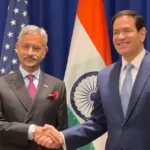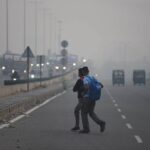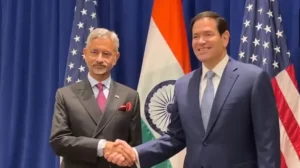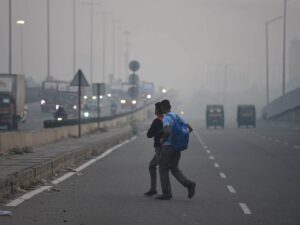Hospitals throughout Delhi-NCR are experiencing a notable increase in patients presenting with flu-like symptoms, and the doctors confirmed the responsible strain is H3N2 Influenza A virus. The usual flu resolves in a couple of days, but the H3N2 variant is marked by high-grade fever, chest tightness, cough, persistent fatigue, and such symptoms that last a week or more. This is worrisome – especially when treatment of individuals who fall in the vulnerable category, including children, seems to be on the rise.
In a span of a few weeks, major healthcare establishments in Delhi and its neighboring National Capital Region (NCR) reported a continued influx of patients who show prolonged upper respiratory symptoms. These are not uncommon presentations, as it is normal for seasonal influenza to peak at this time of year. However, the prolonged symptoms of this current strain have triggered advisories from doctors. The health of children was identified as a concern since pediatricians are noticing patterns of increased occurrence in younger age groups at the highest risk of complications, as children display immunity that is not yet developed.
Pulmonologist Dr Bharat Gopal makes the case that H3N2 is not a new virus, but the current spread is wider than in previous seasons. He emphasizes that those with co-morbidities such as asthma, diabetes, and cardiovascular disorders are at a higher risk of complications, including pneumonia. “It is crucial to seek help in a timely manner, particularly for high-risk patients who may worsen rapidly if they do not receive treatment promptly,” he remarks. Dr Madhavi Bharadwaj, an internal medicine physician, agrees that while most patients will recover in the comfort of their own home with rest, fluids, and basic medical care, those who experience persistent fever, difficulty breathing, or severe weakness should definitely not wait to seek medical help. She also notes that the excessive use of antibiotics without a specific cause has become concerning. Since H3N2 is a viral infection, antibiotics do not help, and antibiotic usage only contributes to the global challenge of antibiotic resistance.
The symptoms of H3N2 have made it different from the regular cold. Patients with the seasonal cold typically will get better in two to three days with symptoms like mild fever and congestion, but patients infected with H3N2 have a cough for a prolonged time, are suffering from respiratory distress, and are more likely to have a fever for more than three days.
The fatigue triggered by this virus seems to be more exhaustive, with many people indicating fatigue for days after the fever breaks. In at-risk populations, primarily the elderly and young children, the risk of complications remains elevated beyond what is typical.
Doctors across Delhi-NCR are explicitly asking everybody to think about preventive measures rather than panic. Things like wearing a mask in crowded spaces, maintaining hand hygiene, minimizing unnecessary close interactions with symptomatic individuals, and, if you become ill, ensuring you’re getting enough rest. All actions contribute to change. Antivirals may be used at times; however, they are only prescribed by doctors, and indiscriminate use can create resistance. Most patients will simply be told to treat themselves with supportive care instead of medication.
The recent surge of flu cases has reignited discussions on India’s preparedness for recurring respiratory outbreaks. Seasonal viruses typically experience climatic peaks upon transitioning from winter to summer; nevertheless, the H3N2 Influenza A came with more impact than the typical seasonal virus, which has added pressure to hospitals. Health journalists like Sonal and Milan from India Today are reporting that misinformation and medicating much for these ailments are compounding the challenges for public health messaging. Thus, while there is a call for the medical community to temper what’s perceived as alarm versus wide-ranging awareness, the community does recommend exercising diligence; making a determined choice is different from being driven by fear.
So are the people in Delhi-NCR at risk? Experts maintain that while no one should panic, people should be vigilant. H3N2 is not new, and although it can, in some cases, cause severe illness, for the most part, healthy individuals will recover with thoughtful self-care and treatment steps. The differentiator is closely monitoring symptoms, avoiding self-medication, and knowing when to seek a doctor’s advice. Dr Gopal reminds us not to be afraid of reasonable caution, but we all share responsibility—being careful protects you and the whole community.
This H3N2 influenza outbreak in Delhi-NCR is a timely reminder that viral respiratory illness will continue to change lives. With the correct precautions, medical advice, and public compliance, the current wave will pass successfully. For now, awareness and responsible behaviour remain the best tools against this respiratory virus that has left many households battling long-duration illnesses this season.












More Stories
Centre Steps Up Health Response: States, UTs Asked to Strengthen Clinics for Air Pollution-Related Diseases
Neurologist Warns: These 3 Everyday Habits Could Be Silently Damaging Your Brain
Fitness Trainer Reveals the Body’s Most Underrated Weapon Against Diabetes—‘Muscle Can Soak Up Glucose Even Without Insulin’